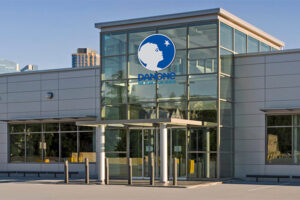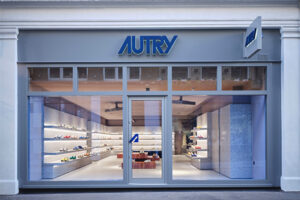The “European Retail Parks – What’s Next?” study carried out by Cushman & Wakefield makes a geographical distinction between Western Europe and Central and Eastern Europe (CEE). In Western Europe, they identified a declining retail trend in 2018, which marked the third consecutive year. Approximately 355,000 sq m of new retail park space was completed, representing a 22% drop compared to 2017. While development has decelerated, the volume of annual completions surpassed that of shopping centers, which has been declining at an increasing rate, -28% in 2018. There is a little evidence of oversupply, although the market is slowly reaching maturity. With lower rents and service charges, the retail park format has proved attractive to retailers. The improved design of the new generation of retail parks has also contributed to the appeal of these schemes to occupiers and visitors alike.
This is reflected in the development pipeline, with 782,000 sq m of new retail park space currently under construction and expected to open in 2019/2020 in Western Europe. However, it is possible that a large proportion of retail park openings may be delayed. Around 200,000 sq m of new retail park space scheduled for opening in 2020 could be postponed to the following year.
Smaller Schemes in the United Kingdom
In the United Kingdom, retail park development has declined significantly since its peak over 10 years ago. In 2017, development activity was 148,000 sq m, showing a solid increase on the previous year. In 2018, the volume of completions decreased by 18% on 2017 and is expected to remain at similar levels in 2019. New retail park developments increasingly include a leisure component to support the attractiveness and dwell time of the shopping destination. In 2018, the 23,000 sq m shopping and leisure element at Thorpe Park, Leeds, saw key leases to open A1 retailers, such as M&S, Next, and H&M. These were supported by a 10-screen Odeon cinema, a Pure Gym, and a strong F&B offer.
The majority of new retail park developments in the United Kingdom going forward are generally smaller schemes of 5,000 to 8,000 sq m, based around smaller format supermarkets and value retailers. This new type of “convenience retail park” is typically leased to Aldi, Lidl, M&S, and value-variety retailers, such as Home Bargains, B&M, or The Range. In tandem, a number of outdated big box retail units, including DIY or former Toys R Us stores, are being redeveloped for mixed-use residential or urban logistics schemes in major cities.
A Look at Spain and Italy
According to Cushman & Wakefield’s study, in Spain, 2018 was an exceptionally strong year for development, with 165,000 sq m of new retail park space completed, which was four times higher than in 2017. Developers and landlords are undertaking refurbishment projects and incorporating a broader range of commercial and leisure tenants to improve their appeal to customers. Going forward, the retail park market will continue to attract investor interest. Development opportunities in some cities (such as Seville) are being used up and, with a lack of new prime product, retail park development is expected to shift to more secondary locations.
In Italy, approximately 100,000 sq m of retail park space is currently under construction and is expected to be completed within the next two years, almost equally divided between new space and expansions.
Movement in Romania and Czech Republic
Let us now turn our attention to CEE, specifically to the Czech Republic. The country remains the largest retail park market in this region. In 2018, 24,000 sq m of new retail park space was completed. However, there is increasing demand for local small schemes that only serve their primary towns or the closest regional catchment areas. Demand for retail park space is supported by newcomers, increasing interest from F&B and leisure operators, value retailers, and e-commerce operators. This trend is expected to continue, with 46,000 sq m currently under construction and scheduled for completion in 2019/2020.
With 1.3 million sq m, the size of the retail park market in Romania is comparable to the Czech Republic, but retail park density remains at a low level. In 2018, 76,000 sq m of new space was opened, accounting for 73% of all new retail supply, making retail parks the most active retail segment. Given the size of towns/cities in Romania – with only one city with a population above 500,000 – retail parks seem to be the most versatile and efficient type of retail. The format works well in larger towns as well as smaller communities, which are unable to accommodate large shopping centers. This is especially true in tertiary cities, such as Roman, Slobozia, and Bistrita, where retail parks will be the dominant format for the foreseeable future.
Strategically situated at the main entrance to the city of Saint-Etienne in France, Steel will open its doors in Spring 2020. Credit: Apsys
Figures Pertaining to Poland, Bulgaria, Hungary, and Slovakia
According to the Cushman & Wakefield study, over the last two years, retail park development in Poland has accelerated. Retail parks are perceived as a format that can attract shoppers (easy access and convenient one-stop shopping), tenants (relatively low costs, flexible floor layout), and investors (an opportunity to enter smaller towns). Approximately 74,000 sq m of new space was completed in 2018, which was a 21% increase on 2017. However, the popularity of shopping centers is clear, and new retail parks only represented 19% of all new space in 2018. A steady pace of development is expected in 2019, with 73,000 sq m scheduled to open. A number of expanding retailers are focused on smaller towns, where retail parks are often the only modern retail destinations.
In Bulgaria, on the other hand, shopping centers have traditionally been the main focus for retailers and developers. However, market conditions are currently changing, and retailers are looking to expand in second- and third-tier cities. This provides an opportunity for small- to medium-sized retail parks that boast easy access, affordable rents, and a good quality tenant mix. This format is the main option for incoming retailers, since there are generally few shopping centers in areas with populations under 100,000.
In Hungary, retail park development has been limited, and there have not been any new openings over the last three years. Tenant demand remains steady, but both domestic as well as international tenants concentrate on the most dominant existing schemes. This trend is expected to continue for the foreseeable future, with no new projects scheduled for completion in the near term.
In Slovakia, approximately 21,000 sq m of new retail park space was completed in 2018. While this is in line with 2017, the number of new schemes below 5,000 sq m is growing. Development is supported by demand from consumers in smaller towns and suburban areas who are looking for convenient shopping facilities.








